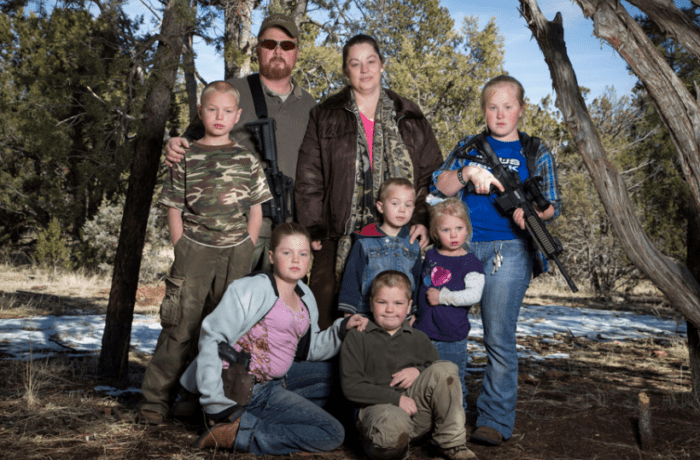UPDATE: After we posted this, Gary Kleck was informed that his assumption about the nature of the CDC survey data he’d discovered was incorrect and withdrew his paper re-calculating the number of annual defensive gun uses. Reason.com added the following statement on their article about his original conclusions:
The paper discussed in this post below has been withdrawn by the author Gary Kleck after Reason brought to his attention an important detail first pointed out by Robert VerBruggen of National Review: Kleck in the original paper treats the CDC’s surveys on defensive gun use as if they were national in scope, as Kleck’s original survey was, but they were not. From VerBruggen’s own looks at CDC’s raw data, it seems that over the course of the three years, the following 15 states were surveyed: Alaska, Colorado, Hawaii, Kentucky, Louisiana, Maryland, Mississippi, Montana, Ohio, New Hampshire, New Jersey, New York, North Dakota, Pennsylvania, and West Virginia. (Those states, from 2000 census data, contained around 27 percent of the U.S. population.) Kleck says he is working on a new version of the paper that recalculates the degree to which CDC’s survey work indeed matches or corroborates his, and we will publish a discussion of those fresh results when they are complete. But for now Kleck has pulled the original paper from the web pending his rethinking the data and his conclusions.
If we’ve heard it once, we’ve heard it a thousand times. The big bad NRA holds so much sway over their puppets in Congress that they got them to prohibit the Centers for Disease Control from even studying “gun violence” and the alleged public health crisis that we have in America due to our malignant relationship with firearms the right to keep and bear them.
There’s only one problem with that anti-NRA talking point. It’s completely and utterly false.
The Dickey Amendment — which was one of probably hundreds of special interest baubles that were hung from the 1996 omnibus spending bill Christmas tree that Congress now uses to fund the government’s operations — prevents the CDC from using its money to advocate for gun control. Research into the whos, whats, whens, wheres and whys of firearms and their use in the commission or prevention of crimes is perfectly legal. No matter what our civilian disarmament advocating friends and their accomplices in the media would have you believe.
Why did Rep. Jay Dickey and his gun rights-supporting colleagues in Congress worry that a federal agency might use taxpayer money to advocate against a right guaranteed in the Constitution? Maybe it had something to do with behavior like this:
(I)n the 1990s, the CDC itself did look into one of the more controversial questions in gun social science: How often do innocent Americans use guns in self-defense, and how does that compare to the harms guns can cause in the hands of violent criminals?
Florida State University criminologist Gary Kleck conducted the most thorough previously known survey data on the question in the 1990s. His study, which has been harshly disputed in pro-gun-control quarters, indicated that there were more than 2.2 million such defensive uses of guns (DGUs) in America a year.
Now Kleck has unearthed some lost CDC survey data on the question. The CDC essentially confirmed Kleck’s results. But Kleck didn’t know about that until now, because the CDC never reported what it found.
“Lost.”
Kleck figures if you do the adjustment upward he thinks necessary for those who had DGU incidents without personally owning a gun in the home at the time of the survey, and then the adjustment downward he thinks necessary because CDC didn’t do detailed follow-ups to confirm the nature of the incident, you get 1.24 percent, a close match to his own 1.326 percent figure.
He concludes that the small different between his estimate and the CDC’s “can be attributed to declining rates of violent crime, which accounts for most DGUs. With fewer occasions for self-defense in the form of violent victimizations, one would expect fewer DGUs.”
In other words, the CDC dug into the question of how often Americans defend themselves using firearms. And they did an impressive job of it, in Kleck’s opinion. The only problem with their findings was that they confirmed Kleck’s results.
Why is that a bad thing? Because based on his research, Kleck found that the number of defensive gun uses in the US was somewhere between 2.1 and 2.5 million per year, a huge multiple over the number of crimes involving firearms. Not the lower (though still significant number of 500,000) total that the CDC had claimed.
For those who wonder exactly how purely scientific CDC researchers are likely to be about issues of gun violence that implicate policy, Kleck notes that “CDC never reported the results of those surveys, does not report on their website any estimates of DGU frequency, and does not even acknowledge that they ever asked about the topic in any of their surveys.”
Gee, why would they bury important results like that? It’s almost as if the white coats at the CDC would rather not publicize any findings that would cast a bad light on the argument for more control and restrictions of civilian-owned firearms.
Or, as Reason’s Brad Doherty concludes his piece . . .
However interesting attempts to estimate the inherently uncountable social phenomenon of innocent DGUs (while remembering that defensive gun use generally does not mean defensive gun firing, indeed it likely only means that less than a quarter of the time), when it comes to public policy, no individual’s right to armed self-defense should be up for grabs merely because a social scientist isn’t convinced a satisfyingly large enough number of other Americans have defended themselves with a gun.
